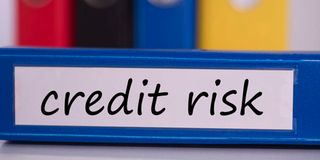Credit cost increases to 32-month high in July

Credit risk is the possibility of either party to a contract being unable to fulfil its financial obligation under the agreement.
Bank lending rates hit a 32-month high in July, an indication of the impact of the risk-based credit policy by commercial banks.
The lending rate was recorded at 12.35 per cent in July, the highest rate since November 2019 when it was 12.38 per cent.
This comes amid an ongoing approval process by the Central Bank of Kenya (CBK) on risk-based lending across all 39 commercial banks, which will allow them to factor in the creditworthiness of a borrower when determining the rate to slap on their loan.
The policy, though expected to be an incentive to banks to lend more, has also seen a rise in the cost of credit for most borrowers, hitting businesses and households who, in turn, cut spending.
In July, CBK disclosed that more than half of commercial banks have had their risk-based lending plans approved or signed off.
The jump in the cost of credit coincides with a continued upward shift in the yield curve for short-term government debt securities, indicating their increased attractiveness by takers of State’s domestic debt, including commercial banks, pension funds, and corporates.
Securities signal
The 91-day Treasury Bill recorded an average interest rate of 8.57 per cent in August, from 6.20 per cent two years ago, amid increased government borrowing from the domestic market, which has influenced the cost of deposits.
High returns on long-term and short-term government securities signal a preference for lending to the State rather than the private sector due to the low-risk nature of the investment.
The central bank rate increased to 7.50 per cent in May from 7 per cent and is also expected to tighten liquidity in the market with high inflation, signalling the high lending rates.
In the year to June 2022 CBK, however, said credit growth to private sector credit increased to 12.3 per cent from 11.5 per cent in April.
Sectors that had the highest demand for credit included transport and communication, manufacturing, trade, and consumer durables, reflecting increased economic activity.
Negative listing
Since last September, banks had heavily cut back on lending to individuals and small businesses based on their risk profiles, citing the incapability to assess their creditworthiness.
President Kenyatta in September last year announced the moratorium on the negative listing of borrowers with loans below Sh5 million by credit reference bureaus for a year, cutting credit information sharing in the banking sector.




